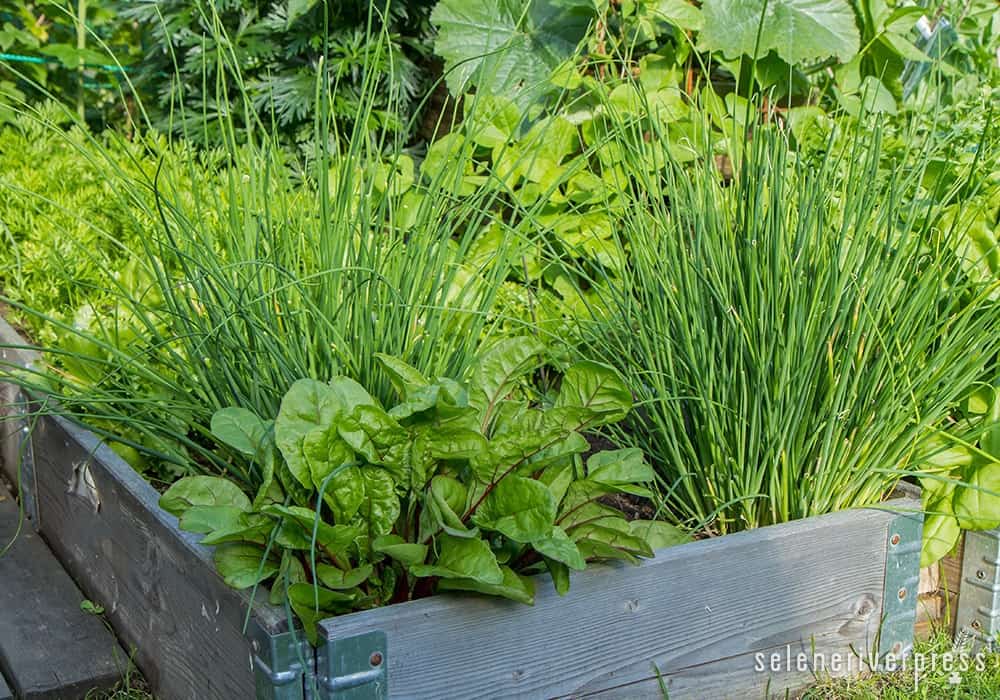Just a few months from now, the promise of gardens bursting with delicious potential will become a reality. Well, for gardeners with seedlings sprouting in sun-filled kitchens and window sills, that is.
Rather than wandering by filled with envy, why not make this the year you join the gardening party?
The good news is that you still have plenty of time to start a garden of your own. You’ll be up to your green thumb in homegrown, organic edibles in no time with this simple herb garden. To make it even easier, we’ve chosen herbs that thrive in summer.
Basil
A summer staple often found cohabitating with tomato plants, basil is ideal for any herb garden, whether plot or pot.
The bright green, aromatic leaves love basking in the summer sun, so plant them where they’re sure to get full sun—six or more hours of direct sunlight—every day. Water basil in the mornings every 2–3 days, depending on how hot it gets, as evening watering tends to leave the plants susceptible to root rot.
To grow a beautiful, bushy basil plant that produces cups and cups of fresh sprigs, aggressive pruning is essential. Cut stems ¼–½ inch above areas where there are two pairs of leaves growing close together—you’ll see a set of small nodes as well. For every cut, two new stems develop, so don’t be afraid to harvest generously.
Did you know? Basil is a natural mosquito repellent.
Cilantro
A major component in salsas, tacos, and many Asian dishes, this leafy herb tolerates some shade but prefers to grow in direct sun. The lifecycle of cilantro from seed to flower is about two months, so plant accordingly.
Cilantro isn’t a good candidate for transplanting, as its taproot grows quick and deep. If you begin your seeds indoors, make sure your container is large enough to accommodate the full-sized plant. A pot 18-inches wide and 10-inches deep is perfect for growing 8–10 plants.
Cilantro tends to bolt in hotter weather, which causes the herb to take on a bitter flavor. To avoid bolting, pinch off flowers when they appear and keep the soil moist.
Did you know? Cilantro is considered a “super herb” because it’s not only an excellent source of vitamins and minerals, but it also aids our body’s natural detoxification.
Dill
The roots of dill (pun intended) are of Mediterranean origin, which is why it makes our list of sun worshippers.
Another herb that develops a prominent taproot, dill is unsuited to transplant. This isn’t an issue since it takes only 10–20 days to germinate. Once the plant reaches a height of six inches, it’s ready to harvest.
Warmer soil and full sun guarantee a bright, pungent flavor. Even though you need to water regularly to avoid letting your plants dry out, you need to make sure the soil drains well. In fact, dill is one herb you can plant in rocky soil, as long as the taproot has room to grow.
Did you know? Dill is a great stomach-soother known to help relieve indigestion and gassiness.
Mint
Nothing says summer like a tasty mint julep, mojito, or refreshing herbal tea.
Choosing which variety to grow—spearmint, ginger, chocolate, pineapple, or peppermint—is the first obstacle you’ll face. The second: keeping the pervasive herb from taking over your garden.
Mint is extremely easy to grow. Partial shade or a full dose of daily sunshine both work fine. The only real requirement is moist soil, so make sure to water regularly. The best way to keep mint from growing out of control is to confine it to containers. This also allows you to grow several varieties without the concern of cross-contamination of flavors.
Did you know? The essential oils of mint activate our salivary glands and digestive enzymes, making it a popular digestive aid.
Thyme
This low-maintenance culinary necessity rounds out the perfect summer herb garden. Thyme flourishes in the bright rays of a summer sun and doesn’t need a lot of water. Because thyme has only minimal water requirements, areas with heavy summer rains need soil that drains exceptionally well.
Use a lot of thyme in your cooking? Great! Use as much as you want because regular harvesting prompts thyme to grow bountifully.
Did you know? Recent studies report thyme is effective in treating coughs, sore throats, and cold symptoms.
What to Know Before You Grow Your Herb Garden
Each of these delicious herbs are very simple to grow, maintain, and harvest. One of the most important factors for a successful and ample harvest is quality soil. To learn more about the nutritional benefits of good soil, check out “Soil: A Foundation of Health” by Arnold P. Yerkes in the SRP Historical Archives.
Happy harvesting!
Image from iStock/Tuomas_Lehtinen.


